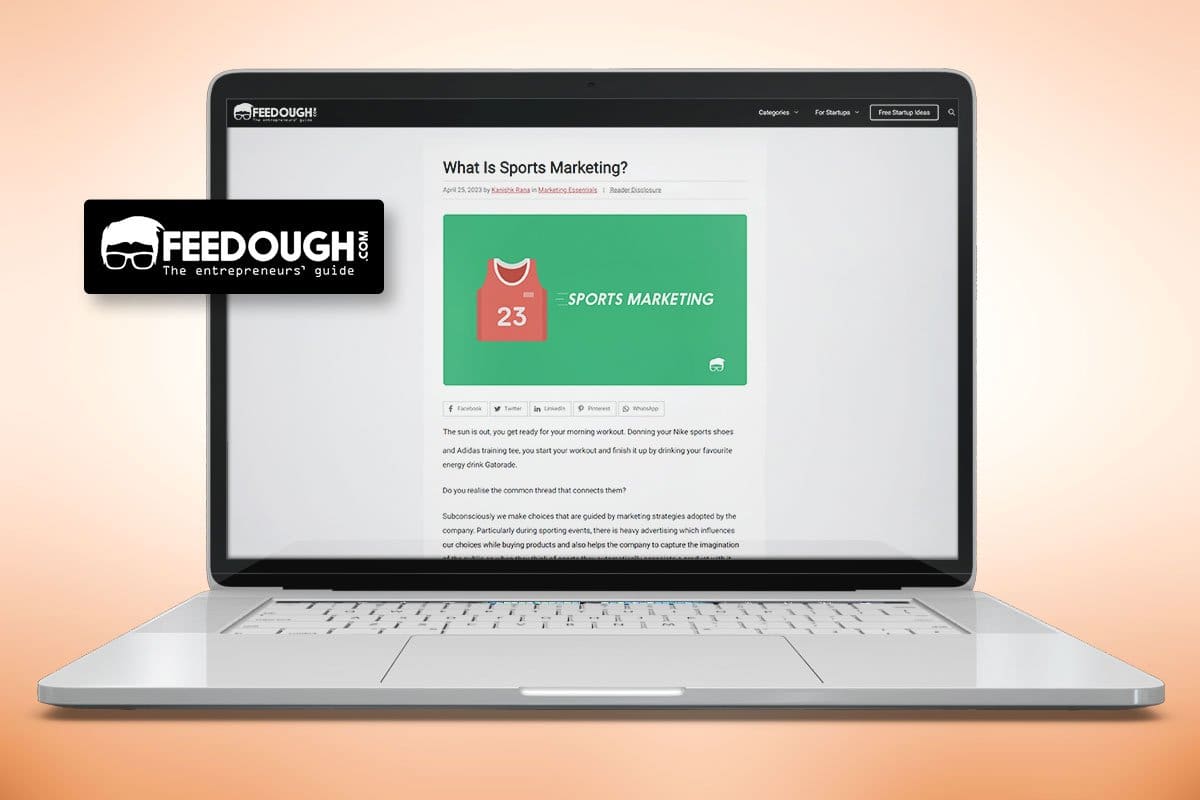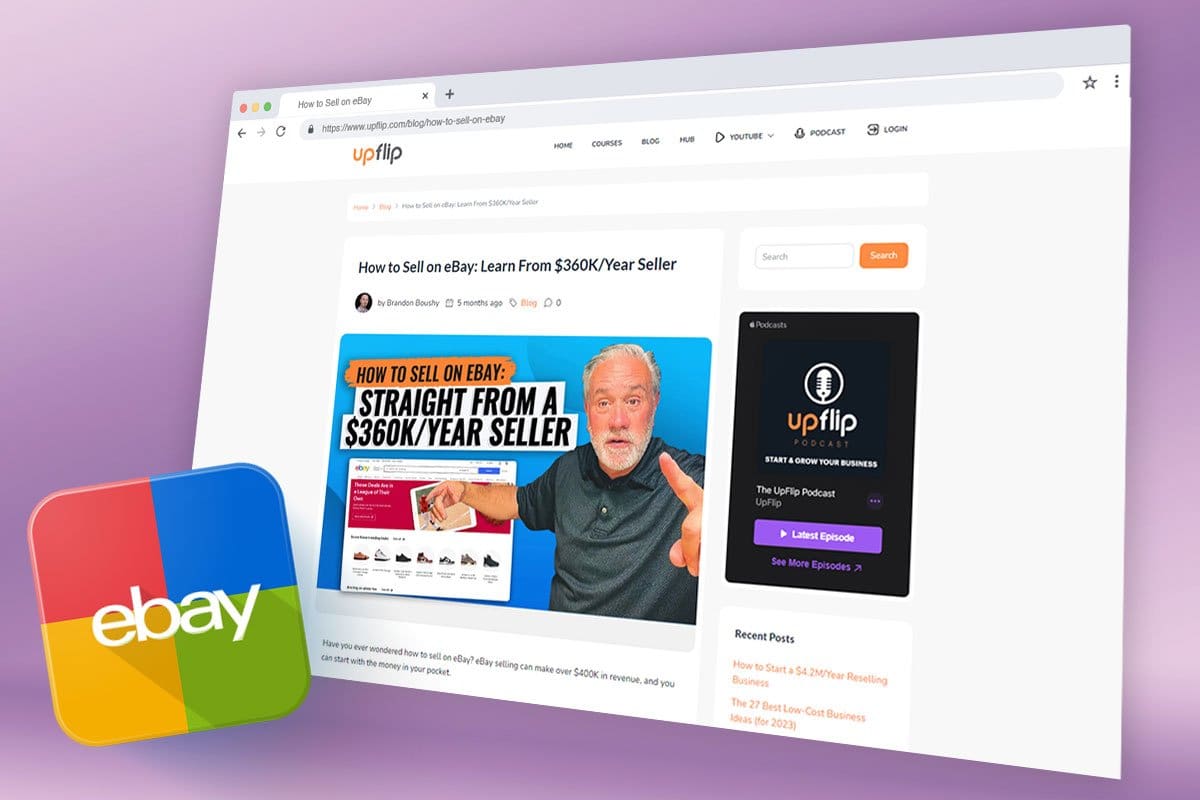Most potential business owners actually start their businesses later in life, but for some, the entrepreneurial spirit strikes early. For those young adults who want to earn extra money and be their own boss, we’ve got you covered! We’ll help you find the best business ideas for teens.
We’ve talked to a lot of small business owners who pursued their ideas as teens, and many of them made millions before they ever reached 30! If you want to start your own business, you’ll love hearing about some of the local businesses they’ve started.
- 7 Small Business Ideas for Teens
- 6 Online Business Ideas for Teens
- 5 Small Business Ideas for Teenage Girls
- 7 Teen Business Ideas for Creatives
- 4 Entrepreneur Ideas for Teens
- 3 Marketing Business Ideas for Young Adults
- 6 Cool Business Ideas for Teens
- 5 More Small Business Ideas for Teens Online
- 5 Service-Based Business Ideas for Teenagers
- Business Ideas for Teens Serving Food
- How to Start a Business as a Teenager
- Learn More About Your Business Idea For Teens
- Are You Ready To Start Your Own Business?
Without further ado, here’s the list!
7 Small Business Ideas for Teens

Some of the best teen business ideas we’ve seen are:
- Pressure Washing
- Landscaping
- Cleaning
- Photography
- Truck Driving
- Construction
- Car Washing
Many of these are local businesses that young entrepreneurs can start in their neighborhood to make some extra money, and they can become a lucrative business as they get older and learn more about how to run a business.
Find out how young entrepreneurs started each of the successful businesses below.
#1. Pressure Washing
• Average Annual Revenue: $64K
• Average Profit Margins: 8.8%
• Startup Costs: $200-$5K
• Time to Revenue: 3+ months
• Annual Market Growth Rate: 0.9%
• Best For: Those who like to work outdoors, those who enjoy working with their hands and using machines and tools
Three of the youngest business owners we have talked to started pressure washing companies. Stephen Rogers talked to us about how he started NW Softwash at 19 years old with just $1,500, and now he’s making $120K per month. Hear from him below.
Check out other interviews with Chase Lille, an 18-year-old who has been pressure washing for over a year, and Alan from Go Detail, who learned to run a business from YouTube.
#2. Landscaping
• Average Annual Revenue: $272K+
• Average Profit Margins: 8.7%
• Startup Costs: $2K-$10K
• Time to Revenue: 1-3 months
• Annual Market Growth Rate: 8.1%
• Best For: Designers, gardeners, and people who like physical work and working outside
A landscaping or lawn care business designs, builds, and maintains gardens and landscapes. Landscapers usually require a lot of time, patience, and creativity to achieve the perfect garden for their clients. Most companies that do landscaping also do lawn care.
Find out how Mike Andes started his lawn care business as a teenager.
#3. Cleaning
• Average Annual Revenue: $74K+
• Average Profit Margins: 6.7%
• Startup Costs: $1K-$30K
• Time to Revenue: 1-6 months
• Annual Market Growth Rate: 1.2%
• Best For: Self-motivated, independent, and detail-oriented entrepreneurs
One of the easiest ways to make money is cleaning people’s houses. Almost anybody with a job and kids needs help keeping their home clean. Young people can start a small business by using the cleaning products at their parents’ homes and offering their services on social media.
If you are 18 or older, you can also use sites like Bark or Housekeeper.com to find clients.
Check out our interview with Austin from Spruse Clean to learn how he makes $62K a month.
#4. Photography
• Average Annual Revenue: $50K
• Average Profit Margins: 7.3%
• Startup Costs: $1K-$10K
• Time to Revenue: 1-6 months
• Annual Market Growth Rate: 0.3%
• Best For: Visual artists and photographers, outgoing and social entrepreneurs
Photography is another field that offers business opportunities for teens. As a photographer, you’ll be taking pictures of people or products. The two types of photography that tend to have the highest booking fees are product photography and wedding photography.
To learn strategies that can turn a photography company into a multi-million-dollar revenue generator, check out our interview with Korbin and Whitney Korzan below:
#5. Truck Driving
• Average Annual Revenue: $449K+
• Average Profit Margins: 5.5%
• Startup Costs: $1K-$100K
• Time to Revenue: 3+ months
• Annual Market Growth Rate: 0.9%
• Best For: Logistics experts, travelers and drivers, and vehicle repair and maintenance pros
Companies across the country are struggling with supply chain issues. One of the challenges is the lack of truck drivers and the fact that most of them don’t actually put in all the driving hours they are allowed.
Out-hustle the old guard and put in the full 12 hours a day to make a great living, like Mikael Sant. Hear how he does it below.
To hear even more tips from Mikael, check out our podcast.
#6. Construction
• Average Annual Revenue: $696K+
• Average Profit Margins: 3.4%
• Startup Costs: $1K-$100K
• Time to Revenue: 1-6 months
• Annual Market Growth Rate: -1.3%
• Best For: Contractors, builders, and makers, people with strong math skills who like physical work
Like working with your hands? Avanni Petras started Petras Homes and is making over $125,000 after working for a concrete company for six years in his teens. Find out how below.
Pro Tip: You can also read our blog on How to Start an $80M/Year Construction Company.
#7. Car Washing
• Average Annual Revenue: $73K+
• Average Profit Margins: 16.1%
• Startup Costs: $500-$5K
• Time to Revenue: 3+ months
• Annual Market Growth Rate: 1.0%
• Best For: Car enthusiasts, detail-oriented entrepreneurs, and those who enjoy working with their hands
There are many ways to make money as a teenager, and one of those ways is by starting a car washing business.
The idea of starting up a carwash is not only an easy way to make money, but it is also an interesting and enjoyable pastime.
It can be done either with or without machines. With low startup costs, you can start small and then grow the business to include mobile car washes and maybe even become a car wash chain.
6 Online Business Ideas for Teens
Check out these entrepreneur ideas for teens if you want to make extra money with an online business:
- Podcasting
- Online Tutoring
- Blogging
- Web Design
- Tech Consulting
- Graphic Design Business
#8. Podcasting
• Average Annual Revenue: $4M+
• Average Profit Margins: 27.1%
• Startup Costs: $500-$5K
• Time to Revenue: 1-3 months
• Annual Market Growth Rate: 6.4%
• Best For: Influencers and thought leaders; people with valuable expertise and online marketing/social media skills
Podcasts are an interesting online business where you can discuss things that interest you and broadcast it to the masses. At the very least, you’ll need recording software (I prefer OBS) and microphones.
Podcasts generate revenue through a variety of methods. To learn more, read this blog on some of the ways to monetize your podcast.
#9. Tutoring

• Average Annual Revenue: $18K+
• Average Profit Margins: 13.10%
• Startup Costs: $100-$1K
• Time to Revenue: 1-3 months
• Annual Market Growth Rate: 8.5%
• Best For: Educators and compassionate, empathetic, people who can explain complex concepts in simple terms
Tutors can make great money helping students who are struggling. Most tutors will charge $25 per hour, but some may be able to get rates up to $80 per hour.
You can find clients at your school, or offer services on sites like Tutors.com once you turn 18. What better way to start a business than to help others succeed?
#10. Blogging
• Average Annual Revenue: $46K
• Average Profit Margins: 14.6%
• Startup Costs: $100-$200
• Time to Revenue: 1 month to 3 Years
• Annual Market Growth Rate: -1.50%
• Best For: Teens with writing, graphic design, and other content creation skills, strong marketers
Anyone can blog. You just have to find something you enjoy writing about. This is one of the best business ideas for teens because you can start blogging on sites like Medium for free.
How do you make money blogging, though?
There are a few ways:
- Freelancing through Upwork and other sites
- Using affiliate links and earning commissions based on referrals
- Earning crypto by blogging on Publish0x
- Allowing Google to sell ads on your site
#11. Web Design

• Average Annual Revenue: $239K+
• Average Profit Margins: 5.3%
• Startup Costs: $100-$1K
• Time to Revenue: 1-3 months
• Annual Market Growth Rate: 1.4%
• Best For: Programmers with knowledge of HTML, CSS, and JavaScript, visual artists and designers, detail-oriented entrepreneurs with strong time and project management skills
Using web and graphic design software can be a fun way for teens to make money. Develop the skills for one of the fastest-growing careers in the U.S.
The Bureau of Labor Statistics expects the need for web design to grow by 13% by 2031, and average wages are over $77K. Wages are typically less than one third of a business’s revenue, so that means a business could make over $225K per designer.
As a web designer, you might create the next cool website or app. Could you imagine if everyone in the world was using a website you created? You’d make millions of people happy with your small business idea.
#12. Tech Consulting
• Average Annual Revenue: $1.4K
• Average Profit Margins: 6.4%
• Startup Costs: $100K-$3.5M
• Time to Revenue: 6-18 months
• Annual Market Growth Rate: 2.2%
• Best For: Entrepreneurs with management or business expertise, people with strong analysis, problem-solving, and communication skills
Tech consulting can be an easy business for teens to start. Tech-savvy consultants can earn money through affiliate marketing and by advising people on the best way to achieve their desired results.
My brother started getting Apple certifications in his teens, and by the time he reached his 30s, he was one of the most highly certified Apple network admins around and had helped companies like Electronic Arts and Intel integrate Macs with Microsoft computers.
Check out this list of the top 100 software companies and find one you are interested in. Businesses are definitely looking for help with implementing software more efficiently and effectively.
#13. Graphic Design

• Average Annual Revenue: $123K+
• Average Profit Margins: 13.5%
• Startup Costs: $500-$5K
• Time to Revenue: 3+ months
• Annual Market Growth Rate: 2%
• Best For: Visual artists, entrepreneurs with creative skills
Graphic design is another easy business to start as a teenager. Graphic design is focused on creating artwork and product information for businesses, including:
- Logos
- Website imagery
- Product packaging
- Marketing materials
To find out more about different types of graphic design businesses, check out the blog post 8 Types of Graphic Design You Need to Know.
5 Small Business Ideas for Teenage Girls

The following small business ideas for teenage girls can also be done by guys, too, but many homeowners prefer letting girls help in their homes. Find business ideas below:
- Babysitting
- Pet Sitting
- Pet Photography
- Pet Grooming Services
- Dog Walking
#14. Babysitting
• Average Annual Revenue: $143K+
• Average Profit Margins: 0.9%
• Startup Costs: $0-$1K
• Time to Revenue: 1-3 months
• Annual Market Growth Rate: 51.7%
• Best For: Those who enjoy childcare and like children
Every family with kids will need a babysitter occasionally. Start a business babysitting and make money watching the kids.
Ask your parents to tell their friends, print up some business cards and leave them at places you frequent, and check on social media for people looking for help. Finding clients shouldn’t be too hard. Almost everyone I know has babysat at some point in their life.
You could even go a step further and start full-time child care services, like Kristy Bickmeyer, who started Twinkle Toes Nanny Agency. Learn more about Kristy here.
#15. Pet Sitting

• Average Annual Revenue: $34K+
• Average Profit Margins: 16%
• Startup Costs: $500-$5K
• Time to Revenue: 3+ months
• Annual Market Growth Rate: 1.7%
• Best For: Pet owners, animal lovers, and those who like working outdoors
In the pet sitting industry, people are required to care for animals in someone else’s home or property. Pet sitters should have experience with animals and a passion for caring for them. They should also be responsible and trustworthy.
In order to get started, you should start by signing up to be a pet sitter on websites such as Wag or Rover.
These websites will then help connect you with people looking for a pet sitter in your area.
It’s not just a matter of hanging out with cats and dogs while their owners themselves are away. Pet sitting requires proper knowledge about animal behavior, nutrition, exercise, and basic first aid skills.
This is not an easy job, but it can provide numerous business opportunities for teens who want to make some cash while enjoying the company of furry friends.
Check out our blog about a pet sitter to learn more.
#16. Pet Photography
• Average Annual Revenue: $50K
• Average Profit Margins: 7.3%
• Startup Costs: $1K-$10K
• Time to Revenue: 1-6 months
• Annual Market Growth Rate: 0.3%
• Best For: Visual artists and photographers who love animals or own pets themselves
If you love animals and photography or just have a lot of time to spare, then you could consider starting your own pet photography business.
There are plenty of online courses that can help you learn the skills needed to start this type of business. You can also use your creativity to come up with different ways to make money with your photography skills.
#17. Pet Grooming

• Average Annual Revenue: $72K+
• Average Profit Margins: 11.5%
• Startup Costs: $1K-$100K
• Time to Revenue: 6-18 months
• Annual Market Growth Rate: 1.1%
• Best For: Pet lovers and experts, salon and grooming professionals, empathetic and detail-oriented entrepreneurs with strong customer service skills
Starting a pet grooming business can be a great way to make money for teenagers or young adults.
The best way to start this business is by getting certification through the National Dog Groomers Association of America and asking prospective clients about their desired groom style.
It’s also worth considering what type of services the potential clients will need—whether that’s basic bathing and clipping or something more elaborate, like shampooing, hair trimming, nail clipping, or ear cleaning.
#18. Dog Walking
• Average Annual Revenue: $34K+
• Average Profit Margins: 16%
• Startup Costs: $500-$5K
• Time to Revenue: 3+ months
• Annual Market Growth Rate: 1.7%
• Best For: Pet owners, animal lovers, and those who like working outdoors
A dog walking business requires picking up after the dog and getting an animal from place to place. That means dog walkers may need a vehicle or access to public transportation.
To become a successful dog walker, one should be patient, dependable, and comfortable working with other people’s dogs. They should also be able to work flexible hours.
7 Teen Business Ideas for Creatives
If you want some business ideas for creatives, consider these ideas:
- Holiday Decorating
- Proofreading
- Greeting Card Writing
- Event Photography
- Art Instruction
- Music Teaching
- Jewelry Making
#19. Holiday Decorating
• Average Annual Revenue: $168K+
• Average Profit Margins: 10.6%
• Startup Costs: $1K-$100K
• Time to Revenue: 1-3 months
• Annual Market Growth Rate: 1.2%
• Best For: Those who like to organize, clean, and declutter, those who like to socialize and help people
Offering an attractive and memorable holiday decorating business can be a great way to earn some extra cash during the holidays.
The major holidays that people or businesses tend to have decorative festivities for in the U.S. are:
- Valentine’s Day
- Easter
- St. Patrick’s Day
- Cinco de Mayo
- 4th of July
- Halloween
- Thanksgiving
- Christmas
- New Year’s
Check out our interview with Martin Skarra, who runs a window cleaning business and hangs Christmas lights during the winter.
This is a unique option on the list of business ideas for teens because it is creative and lets them focus on their studies and other activities while they are still in school.
#20. Proofreading
• Average Annual Revenue: $25K+
• Average Profit Margins: 9%
• Startup Costs: $100-$1K
• Time to Revenue: 1-3 months
• Annual Market Growth Rate: 1.9%
• Best For: Grammar and writing experts, people with a sharp eye for detail
Another good business for teens is offering proofreading services. There are plenty of students who need help with their grammar and punctuation.
One upside is that your clients will be convenient to you. You’ll find them among the student body of your high school or college.
Students might not have the most money, but your social network will grow as students become professionals and need other quality control jobs performed.
#21. Greeting Card Writing
• Average Annual Revenue: $712K
• Average Profit Margins: 14.6%
• Startup Costs: $100-$200
• Time to Revenue: 1 month to 3 Years
• Annual Market Growth Rate: -1.5%
• Best For: Creative entrepreneurs with strong communication skills
Another passion that creative teens can turn into a small business is greeting card writing.
Teens can sell their own greeting cards through sites like Shopify using the print-on-demand company Card Isle. Alternatively, they can try freelancing for Hallmark.
#22. Event Photography
• Average Annual Revenue: $50K
• Average Profit Margins: 7.3%
• Startup Costs: $1K-$10K
• Time to Revenue: 1-6 months
• Annual Market Growth Rate: 0.3%
• Best For: Visual artists and photographers, outgoing and social entrepreneurs
Photography is a growing industry, and both seasoned and young photographers can offer event photography services. The main responsibility of the event photographer is to capture the essence of the event they’re commissioned to photograph.
The demand for event photography has increased over the last few years because of its many use cases. Check out our interview with a wedding photographer who makes $2 million per year.
#23. Art Instruction

• Average Annual Revenue: $18K+
• Average Profit Margins: 13.10%
• Startup Costs: $100-$1K
• Time to Revenue: 1-3 months
• Annual Market Growth Rate: 8.5%
• Best For: Educators and tutors with creative skill and imagination
Another fun, creative career is providing art lessons. If you want to provide art lessons and earn some good money, you should know the following:
- You will need a set of materials and tools to use in your lessons.
- You will need your own studio or space to teach from.
- You may need to create a website or social media page where people can learn about the class.
- You may even want to register as a business with the local government.
As your business grows, you can start doing more lessons and offer group sessions.
Once you reach the age to legally serve alcohol, you can even do wine and arts nightlife events. Every event like this I’ve ever been to has been a blast. It’s definitely a fun business to be in.
#24. Music Teaching

• Average Annual Revenue: $18K+
• Average Profit Margins: 13.10%
• Startup Costs: $100-$1K
• Time to Revenue: 1-3 months
• Annual Market Growth Rate: 8.5%
• Best For: People with a keen ear for sound and music
What better way to start a new business than with something you enjoy?
A music teacher can provide music lessons to both children and adults. Most of these music lessons are done in person, but they can also be done via video chat.
If you want to start it as an online business, many talented musicians provide Masterclasses or create YouTube tutorials.
Check out our interview with Jacques Hopkins to learn how he earns $480K a year teaching piano lessons with his course:
#25. Jewelry Making
• Average Annual Revenue: $114K+
• Average Profit Margins: 10.3%
• Startup Costs: $500-$250K
• Time to Revenue: 3+ months
• Annual Market Growth Rate: 2.0%
• Best For: Fashionistas, designers, and artists with strong sales and marketing skills
If you like arts and crafts, many small business owners find success making their own jewelry.
This consists of buying raw materials and turning them into a piece of jewelry. Then you can sell them in online stores or at craft fairs. The business events platform 10times has a list of almost 25,000 events in the U.S. where you can sell your goods.
4 Entrepreneur Ideas for Teens

These businesses aren’t especially difficult but will teach you skills that are valuable to almost every business. Consider:
- Errand Running
- Delivery
- Packing Business
- Recycling Business
#26. Errand Running
• Average Annual Revenue: $131K
• Average Profit Margins: 3.6%
• Startup Costs: $100-$9.5K
• Time to Revenue: 3+ months
• Annual Market Growth Rate: 6.7%
• Best For: Drivers, those who like to socialize
An errand running service enables teens to work as a personal shopper and a courier at the same time. This is a great business to combine with driving Uber or Lyft.
The job is simple: You’ll go to a grocery store and buy all the items that correspond with the list of items a customer has sent. Then you’ll deliver the goods.
The customers can pay for these services through PayPal, Venmo, or your own payment processor.
#27. Delivery
• Average Annual Revenue: $131K
• Average Profit Margins: 3.6%
• Startup Costs: $100-$9.5K
• Time to Revenue: 3+ months
• Annual Market Growth Rate: 6.7%
• Best For: Drivers, those who like to socialize
The food delivery industry is a booming market, with companies like Uber Eats and Grubhub making it easier for people to get their favorite food delivered to their doorstep.
Food delivery services are perfect for teens who want to make some money on the side. As a teen, you can start your own courier service where you pick up orders from restaurants and deliver them locally.
Learn more about starting a delivery service below:
#28. Packing

• Average Annual Revenue: $168K+
• Average Profit Margins: 10.6%
• Startup Costs: $1K-$100K
• Time to Revenue: 1-3 months
• Annual Market Growth Rate: 1.2%
• Best For: Those who like to organize, clean, and declutter, and those who like to socialize and help people
A packing business is the perfect business idea for teens looking to get started in the world of entrepreneurship. They can start this enterprise on a small scale and eventually expand it into a larger-scale company.
Some of the benefits teens get from starting this kind of business include:
- Working from home, making it an easy venture for all family members to contribute to
- Providing job opportunities to other family members who might not be able to work anymore but still want some income
- A limited capital requirement to start because they are labor-intensive rather than capital-intensive
#29. Recycling
• Average Annual Revenue: $52M+
• Average Profit Margins: $52M+
• Startup Costs: $500-$3.5M
• Time to Revenue: 6-18 months
• Annual Market Growth Rate: 1.9%
• Best For: Materials and construction experts, businesspeople who like physical work
Recycling is one of the most important things that we can do for our planet. It’s also one of the easiest things to get into.
There are plenty of ways to make money with recycling, but it may be best to start with a simple idea like running a recycling dropoff business.
What you’ll need:
- A space for storing and sorting recyclables
- A website or Facebook page to advertise your service
- Recycling bins for customers to use when dropping off materials at your business
- Deals with recycling centers to send the recycled goods to be processed
Two areas that are often overlooked when recycling are electronics boards and construction materials. Both can make hefty returns if you start a business in an area that doesn’t offer disposal of these things.
3 Marketing Business Ideas for Young Adults
Think you might enjoy marketing? Consider a business idea from this list:
- Sports Promotion
- Social Media Marketing
- Social Media Influencer
#30. Sports Promotion

• Average Annual Revenue: $60K-$160K
• Average Profit Margins: 8%
• Startup Costs: $500-$2K
• Time to Revenue: 1-3 months
• Annual Market Growth Rate: 10.5%
• Best For: Bloggers, influencers, and digital marketing and social media experts
The internet is a vast space, and there are business ideas for teens in most niches. Starting a business in sports promotion is a great idea for a teenager who loves sports and has the time to dedicate to it. You’ll be marketing sports or athletes.
This article can teach you more about the field.
The most important thing about starting a business in sports promotion is being aware of the different obstacles that come with this type of business.
For example, you have to know how to promote yourself on social networking sites, have connections with people in the sports industry, and be assertive when interacting with consumers.
#31. Social Media Marketing
• Average Annual Revenue: $817K
• Average Profit Margins: 6.9%
• Startup Costs: $100-$10K
• Time to Revenue: 1-6 months
• Annual Market Growth Rate: 1.3%
• Best For: Social media experts, writers and content creators, people with search engine optimization (SEO) expertise
Social media is a powerful marketing channel that every business should take advantage of. It’s the easiest way to get in contact with your target audience, build your brand, increase sales, and attract new customers.
A social media business posts content regularly to help engage with followers. It doesn’t have to be big content, either! Open questions, polls, and Q&As are great ways to engage consumers.
Helping out a business with their social media management is a natural fit for teens who are already familiar with the ins and outs of social media platforms. Your customer list could include any small or large business that simply doesn’t have the time or bandwidth to manage its own accounts.
#32. Social Media Influencer
• Average Annual Revenue: $817K
• Average Profit Margins: 6.9%
• Startup Costs: $100-$10K
• Time to Revenue: 1-6 months
• Annual Market Growth Rate: 1.3%
• Best For: Social media experts, writers and content creators, and people with SEO expertise
When it comes to marketing, social media influencers are the new celebrities. They can reach millions of people with just one TikTok or tweet. Once you become one, businesses will hire you to promote their selling digital products online.
Influencers on social media are not just people who have a ton of followers. They are usually people who have something valuable to offer on their channels, whether it be their creativity or their expertise in a topic.
Start sharing more about the things you love, post regularly, and build your following.
6 Cool Business Ideas for Teens

Consider some of these businesses.
- Cake Making
- Magazine (e-Zine) Publishing
- Craft Fair Vending
- Window Washing
- Art Sales
- Soap Making Business
#33. Cake Making
• Average Annual Revenue: $1.52M
• Average Profit Margins: 5.4%
• Startup Costs: $100-$3M
• Time to Revenue: 1-6 months
• Annual Market Growth Rate: 1.1%
• Best For: Food lovers and creative entrepreneurs with strong customer service skills
One of the most fun businesses for teens to get into is cake making—or any other food-related business.
If you enjoy cooking, baking, and decorating cakes, then it might be a good idea for you to start your own cake-making business in your free time.
You can sell them to your friends and family members, or in some cases, you can even open up a shop in the local area.
Another option is to create an online bakery where people can order cakes through the website and have them delivered on-demand with additional customization options depending on what they order (flavor, toppings, etc.).
Check out this video about how this bakery owner started his bakery.
#34. Magazine (e-Zine) Publishing
• Average Annual Revenue: $712K
• Average Profit Margins: 14.6%
• Startup Costs: $100-$200
• Time to Revenue: 1 month to 3 Years
• Annual Market Growth Rate: -1.5%
• Best For: Creative entrepreneurs with strong communication skills
Starting your own magazine can be a difficult endeavor. But with the right knowledge, you can help ensure the success of your project.
The first thing to know about publishing a teen-oriented magazine is that it has to be relevant and tailored toward teens in order to make it interesting for them. Good thing you are one.
Don’t make the mistake of having old people tell you what to write about, ‘cause we have no clue! There are plenty of great examples out there of successful teen magazines that have been created by teens themselves.
#35. Craft Fair Vending

• Average Annual Revenue: $114K+
• Average Profit Margins: 10.3%
• Startup Costs: $500-$250K
• Time to Revenue: 3+ months
• Annual Market Growth Rate: 2.0%
• Best For: Fashionistas, designers, and artists with strong sales and marketing skills
One of the more common entrepreneurship ideas for teenagers is selling at local craft fairs. That makes sense, since good business ideas for teens are low-cost and can be done mostly from home.
A craft fair vendor is a great opportunity because you can sell your arts and crafts projects or simply purchase goods for reselling.
#36. Window Washing
• Average Annual Revenue: $64K
• Average Profit Margins: 8.8%
• Startup Costs: $200-$5K
• Time to Revenue: 3+ months
• Annual Market Growth Rate: 0.9%
• Best For: Those who like to work outdoors, those who enjoy working with their hands, machines, tools
If you’re wondering how to start a business as a teenager with no money, consider a window-washing business.
The world loves to be able to see through their windows, and a teen can start this business with a roll of paper towels and the window cleaner they can find for free in their cleaning closet.
When you run out of paper towels and free window cleaner, you can easily buy more after the first job.
If you really want to get creative, use a squeegee and develop your own cleaning products that you can sell to your clients.
As a teen, this is great because it combines low costs with lots of opportunities to increase your skill set.
Check out our interview with Martin Skarra, who bought a window cleaning business:
#37. Art Sales
• Average Annual Revenue: $68K+
• Average Profit Margins: 6.8%
• Startup Costs: $1K-$100K
• Time to Revenue: 3+ months
• Annual Market Growth Rate: 0.5%
• Best For: Salespeople, those with marketing skills, and those who like to travel and socialize
There are a ton of ways to sell art.
Here are some tips for success while selling art:
- Decide what kind of art to sell: original, commissioned, or prints.
- Find a niche for your art. Digital art? Watercolor paintings? Photographs?
- Create a website or blog where you display your work and provide contact information for potential buyers.
- Showcase your work at galleries, small art festivals, and local events. Keep in mind that the goal is to have people see your work and want to buy it.
- Consider using social media sites like Facebook and Instagram as marketing platforms.
#38. Soap Making
• Average Annual Revenue: $1.4M+
• Average Profit Margins: 5.7%
• Startup Costs: $500-$250K
• Time to Revenue: 3+ months
• Annual Market Growth Rate: 1.2%
• Best For: Makeup artists, beauty influencers, cosmetic chemists, and hair and skin care experts
Everybody has to clean themselves. Creating different fragrances of soap can be a fun way to make money. In fact, the U.S. spends nearly $43 billion per year on soap. Get a piece of your local market, then go national.
5 More Small Business Ideas for Teens Online
Didn’t get enough ideas above for businesses you can run online? Consider some of these:
- Online Reseller
- Data Entry
- Tech Support
- Transcription
- Retail Arbitrage Business
#39. Online Reselling

• Average Annual Revenue: $60K-$120K
• Average Profit Margins: 5-15%
• Startup Costs: $100-$10K
• Time to Revenue: 30-90 days
• Annual Market Growth Rate: -9.3%
• Best For: Thrifters, collectors, hobbyists, and craftsmen
Starting an online reseller business is a good idea for teens who want to earn some money and explore their entrepreneurial spirit.
It can be as simple as buying clothes, collectibles, or any other item from local stores and reselling them on your own website or on eBay.
Check out our interview with Mike Wilson, who makes $1K to $30K+ per month selling on eBay:
#40. Data Entry
• Average Annual Revenue: $35K-$50K
• Average Profit Margins: 10.5%
• Startup Costs: $100-$200
• Time to Revenue: 1-3 months
• Annual Market Growth Rate: 1.9%
• Best For: Detail-oriented people and those with administrative, clerical, or similar experience
Companies need a ton of data entry. You could start a small business helping other small business owners enter their data.
This is a job that can be done from home with remote access, or you can go to local companies and do the work on site.
As long as you can type, data entry should definitely be on the list of teenage business ideas.
#41. Tech Support

• Average Annual Revenue: $35K-$50K
• Average Profit Margins: 10.5%
• Startup Costs: $100-$200
• Time to Revenue: 1-3 months
• Annual Market Growth Rate: 1.9%
• Best For: Outgoing and social entrepreneurs, those with strong scheduling, time management, problem solving, and technical skills
If you have a knack for technology, have a positive attitude, and are great with people, then you should consider starting a tech support business.
You might not realize that there’s a huge demand for tech support. In fact, the Bureau of Labor Statistics found that there were currently 110,000 jobs in this field.
#42. Transcription
• Average Annual Revenue: $25K
• Average Profit Margins: 20.50%
• Startup Cost: $500-$5K
• Time to Revenue: 1-3 months
• Annual Market Growth Rate: 4.4%
• Best For: Fast typers who are excellent listeners and have strong time management skills
Transcribing is documenting what is said during a meeting. Plenty of businesses need this service, and NYtimes Wirecutter found that humans are still better than AI at transcribing.
You can combine both human and AI tools in your business to help you serve multiple clients at once.
Transcription may be a slowing field due to technological advances, but if you know how to leverage the technology, it can be a great business for teenagers.
#43. Retail Arbitrage

• Average Annual Revenue: $60K-$120K
• Average Profit Margins: 5-15%
• Startup Costs: $100-$10K
• Time to Revenue: 30-90 days
• Annual Market Growth Rate: -9.3%
• Best For: Shoppers, collectors, and thrifters
Finding products that are being sold for less than market value, buying them, and making a profit is a great way to make some extra money. You’d be surprised how easy it is.
We interviewed a former delivery driver who makes $35K doing this and selling on eBay.
5 Service-Based Business Ideas for Teenagers
Maybe you like helping people accomplish tasks they need to complete. Then these businesses might be right for you.
- Laundry Services
- College Prep
- Leaf Removal
- Tech Tutoring for the Elderly
- Makeup Artistry
#44. Laundry Services
• Average Annual Revenue: $311K+
• Average Profit Margins: 22.1%
• Startup Costs: $100K-$3.5M
• Time to Revenue: 6-18 months
• Annual Market Growth Rate: -0.1%
• Best For: Customer service pros with high attention to detail
Running a laundry service is a great way to make money, and it can be very profitable. A ton of people are too busy to do their laundry and would be happy to have someone come to their home and do it for them.
As your business grows, you can get a location where customers can just drop off the clothes on the way to work and pick them up on the way home.
You’ll need more than one washer and dryer to have a location with drop-offs to serve the client, though. You will most likely have to buy or rent them from a company that provides laundry equipment for entrepreneurs.
You will also need to get the supplies, such as detergent, fabric softener, bleach, and other things needed for washing clothes. After you have purchased the necessary supplies, start marketing to more people in the area.
Check out our interview with Ferndale Laundry to find out how lucrative a laundromat can be.
#45. College Prep
• Average Annual Revenue: $234K+
• Average Profit Margins: 5.8%
• Startup Costs: $100-$1K
• Time to Revenue: 1-3 months
• Annual Market Growth Rate: 1.1%
• Best For: Teachers and people with in-demand or niche skills and knowledge
College is becoming more expensive every year, so it is no surprise that many teenagers are looking for entrepreneurial opportunities to make extra cash. And some of the most popular businesses for teens are college prep courses.
These types of courses help high school students prepare for college, whether they want to attend a four-year university or go into trade school.
College prep courses can be a profitable business, but they also require a lot of time and effort on the part of the teen business owner.
#46. Leaf Removal

• Average Annual Revenue: $272K+
• Average Profit Margins: 8.7%
• Startup Costs: $2K-$10K
• Time to Revenue: 1-3 months
• Annual Market Growth Rate: 8.1%
• Best For: Designers, gardeners, and people who like physical work and working outside
A leaf removal service is a small business that offers to remove leaves from a client’s property during fall or year round.
For example, if you live in a city and have a lot of trees around your house that shed leaves all year round, you can see success in cleaning up the leaves every week or two.
#47. Tech Tutoring for the Elderly
• Average Annual Revenue: $18K+
• Average Profit Margins: 13.10%
• Startup Costs: $100-$1K
• Time to Revenue: 1-3 months
• Annual Market Growth Rate: 8.5%
• Best For: Educators and people who are compassionate, empathetic, and can explain complex concepts in simple terms
Technology is the future, and yet it can be overwhelming for the elderly.
One way to make technology more accessible to the elderly is to provide tech tutorials for people who are not familiar with technology.
#48. Makeup Artistry
• Average Annual Revenue: $18K+
• Average Profit Margins: 13.10%
• Startup Costs: $100-$1K
• Time to Revenue: 1-3 months
• Annual Market Growth Rate: 8.5%
• Best For: Makeup enthusiasts, artists interested in beauty
Another great business idea is starting a makeup artist business. Anyone can start their own business doing makeup, but some states may have licensing requirements that require an apprenticeship or school.
You can book clients online, teach them how to apply their own makeup, apply people’s makeup in person, and also be an online fashion reseller for your favorite products. You can be a valuable resource to people wanting to beautify themselves.
Business Ideas for Teens Serving Food
If you want to work with food but don’t want to work as a server or in fast food, consider running an…
#49. Ice Cream Cart
• Average Annual Revenue: $279K+
• Average Profit Margins: 3.7%
• Startup Costs: $100K-$3.5M
• Time to Revenue: 6-18 months
• Annual Market Growth Rate: 0.7%
• Best For: Friendly, creative, fun-loving, and detail-oriented entrepreneurs focused on customer service
An ice cream cart is another great small business idea for teens.
If you live near a park, just get an ice cream cart and some of your favorite treats that you can get at low cost from the grocery store, then sell them individually for 3x as much as you paid.
Make sure you have a little radio with the ice cream man music playing, and your job’s done.
All the kids will rush your ice cream, and you’ll be ready for your next journey to the grocery store. If you want to hire your friends to work jobs at other parks, the growth can compound quickly!
How to Start a Business as a Teenager
Many business ideas follow the same basic seven-step process. When you want to start a teenage business idea, follow these steps:
- Choose a good business idea.
- Write a business plan.
- Choose your business structure.
- Get everything to start your business.
- Follow industry best practices, regulations, and tax laws.
- Run your business.
- Keep learning and improving.
If you are a teen under 18, you may need your parents to help you start the business legally.
If so, make sure that you trust the adult who signs the contracts to be honest and fair. Greedy parents have ruined lives. Don’t let people steal the gains you make as a teen entrepreneur.
Use your resources. Adults love seeing teens develop their skill sets and are happy to give input on their areas of expertise.
The whole world is going to social media marketing. No matter what business you are in, start developing your status as a social media influencer. It will make the process easier in any industry.
Always encourage people to help you get more business through word of mouth.
Learn More About Your Business Idea For Teens
Check out some of our most-viewed videos and blogs to understand different aspects of starting a business:
Are You Ready To Start Your Own Business?
If you have started a business as a teen, we’d love to hear from you about how you started your business.
If you decide to start one after reading our blog or watching our videos, we definitely want to keep track of how you’re doing. Let us know so we can follow your journey.












